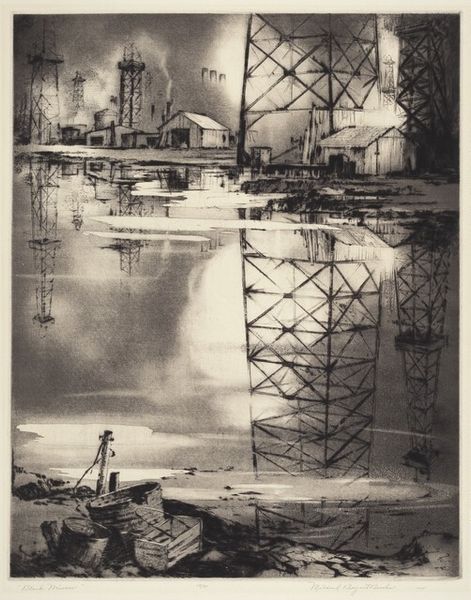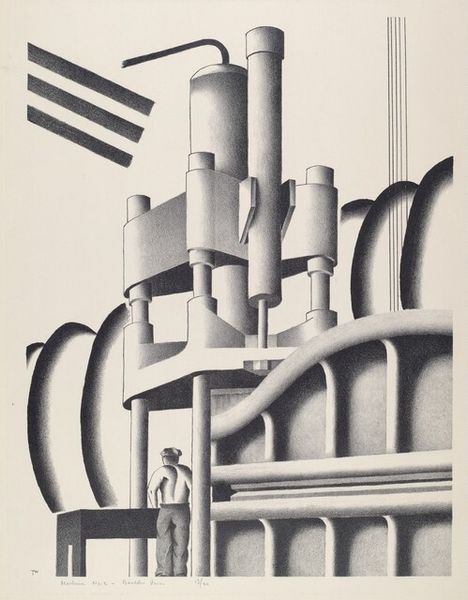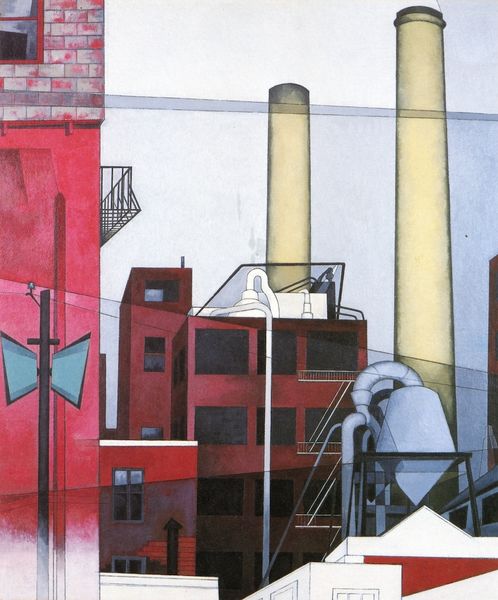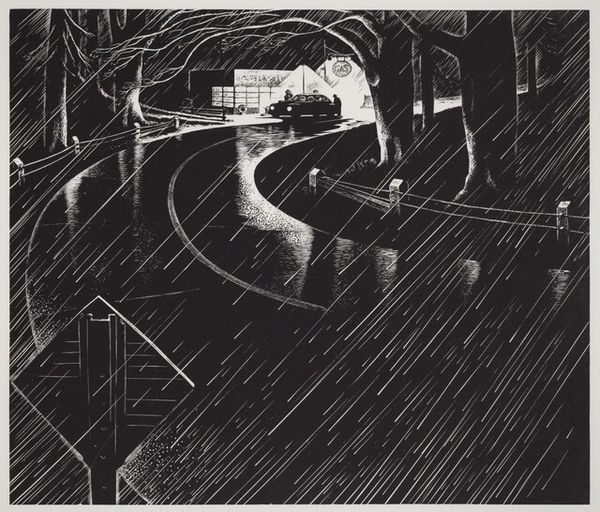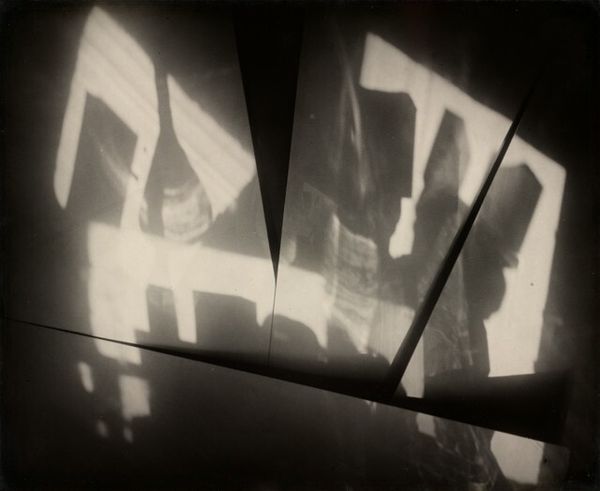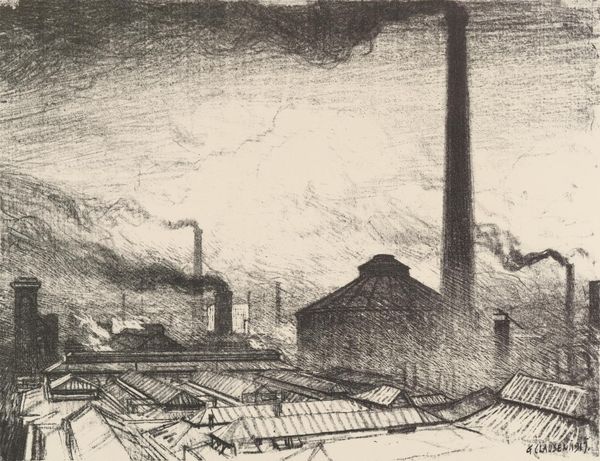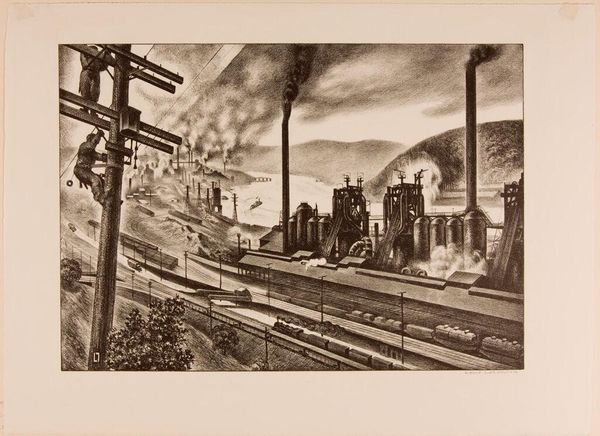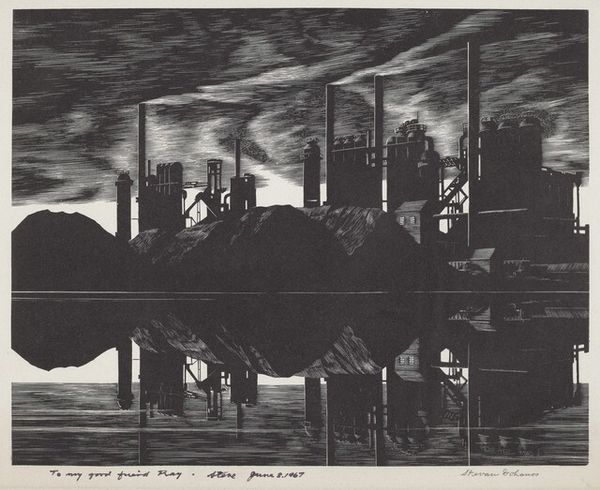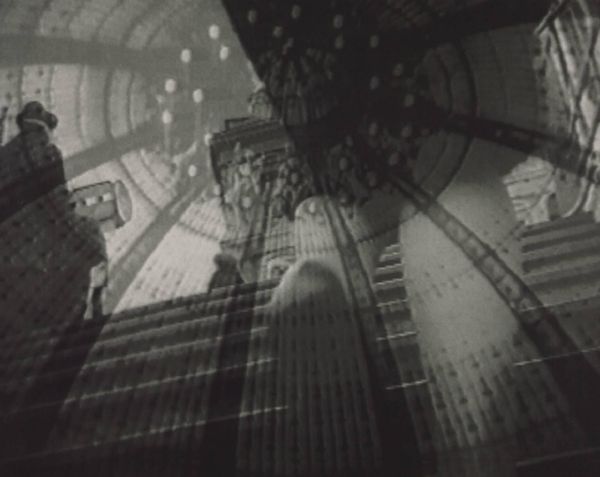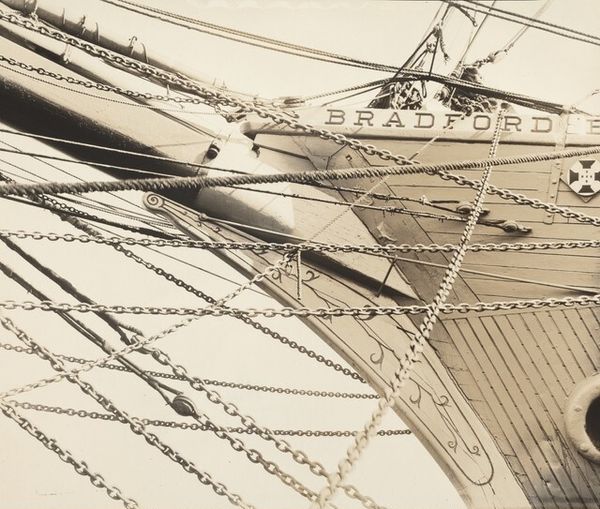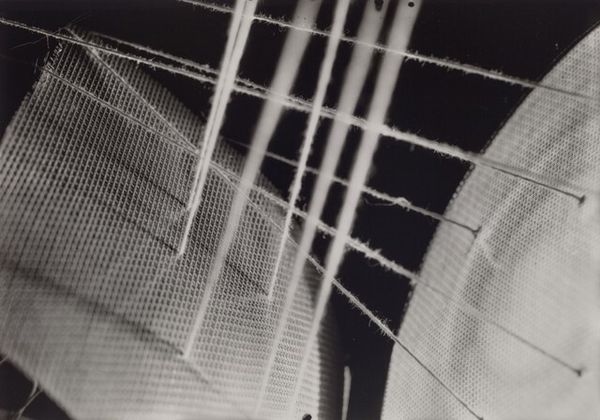
Dimensions: 30 × 36 in. (76.2 × 91.4 cm)
Copyright: Public Domain
Curator: Standing before us is a compelling oil-on-canvas piece titled "National Defense." Its creation spanned from 1900 to 1943, so it reflects a broad, evolving context. Editor: My first impression is of something starkly powerful, a silent scream rendered in shades of gray. The monolithic structures juxtaposed against that lonely tractor... it’s unsettling, beautiful, and vaguely ominous all at once. Curator: Indeed. The artist masterfully contrasts the industrial with the agrarian. Notice the looming grain elevators, their geometric rigidity softened by plumes of smoke. And then, that tiny tractor bravely plowing a vast field. It’s as if industry is breathing down the neck of the American landscape, slowly encroaching on its very existence. Editor: And let's talk about the paint itself. I imagine the artist carefully layering those oil paints to get those smokestacks to look just so, those pipes converging—almost an aggressive presence that stands out when compared to the soft touch used to evoke those cultivated fields. It highlights the human impact on this landscape, one of creation but also one of forceful alteration. Curator: Absolutely. And though undated in a specific year, you could read into it something about wartime production and national identity. The title itself is a loaded one. How do these industrial advancements contribute to the protection—or the exploitation—of a nation's resources? Is the artist subtly posing a question here, one about progress versus preservation? Editor: I find myself thinking about the artist's choices of material as being directly tied to how they saw the shift in power in society as industrialization accelerated. Oil paint—something readily industrialized and transportable — as opposed to painting en plein air capturing idyllic farmland in real time. And in muted shades that remind us of soot. Curator: I hadn't considered the soot element—that adds a layer of… well, of gritty realism. The painting refuses to offer easy answers. It acknowledges the necessity of national defense, perhaps, but it doesn't shy away from presenting the potential consequences of unchecked industrial expansion either. Editor: Well, considering its place in art history, "National Defense" reflects anxieties still relevant today concerning industrialization's complex interaction with natural environments, reminding us of our complicated position as creators, consumers, and modifiers of the world around us. Curator: A rather pertinent thought indeed! A potent mix of anxiety and reflection—I can only imagine how audiences might view it with our current understanding of these things, or fifty years from now!
Comments
No comments
Be the first to comment and join the conversation on the ultimate creative platform.

